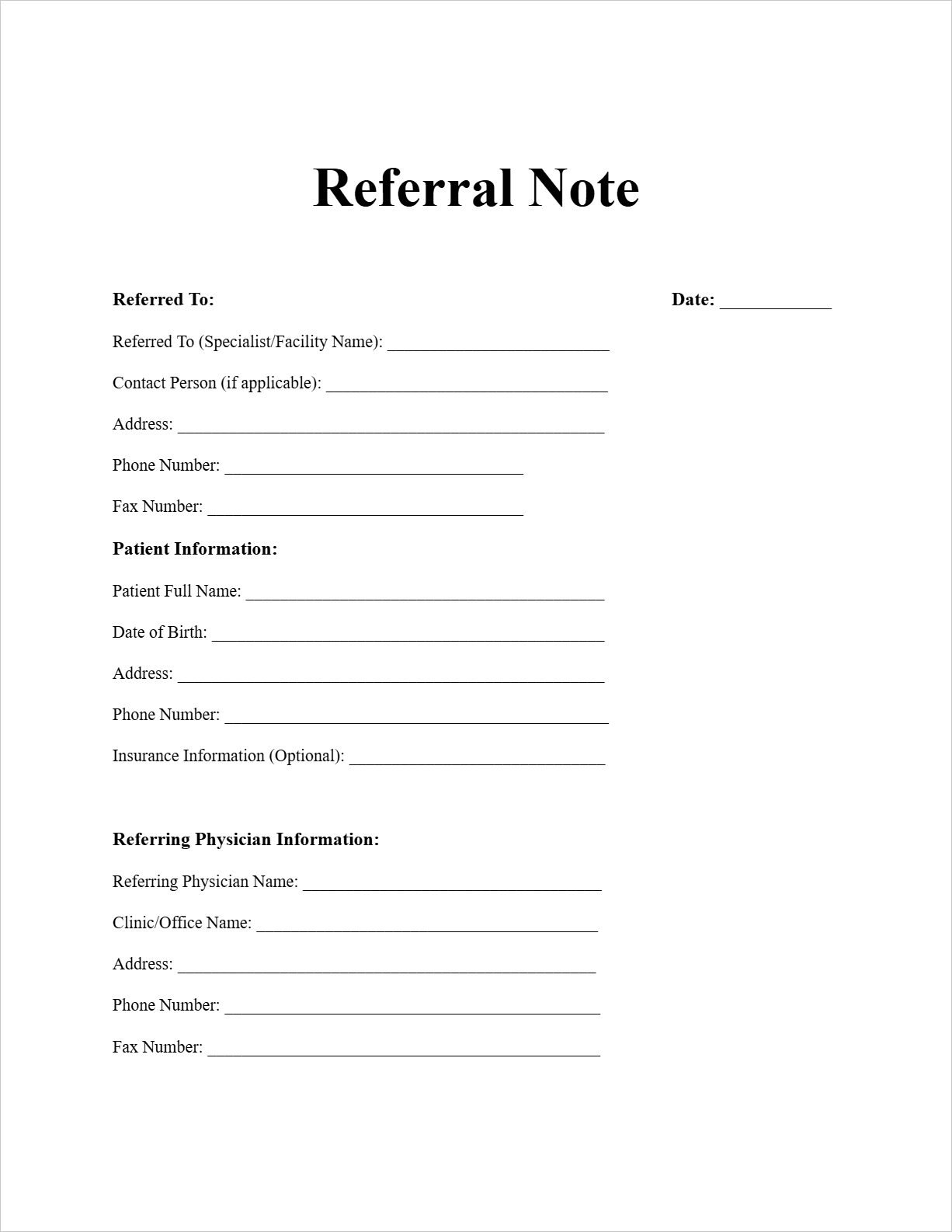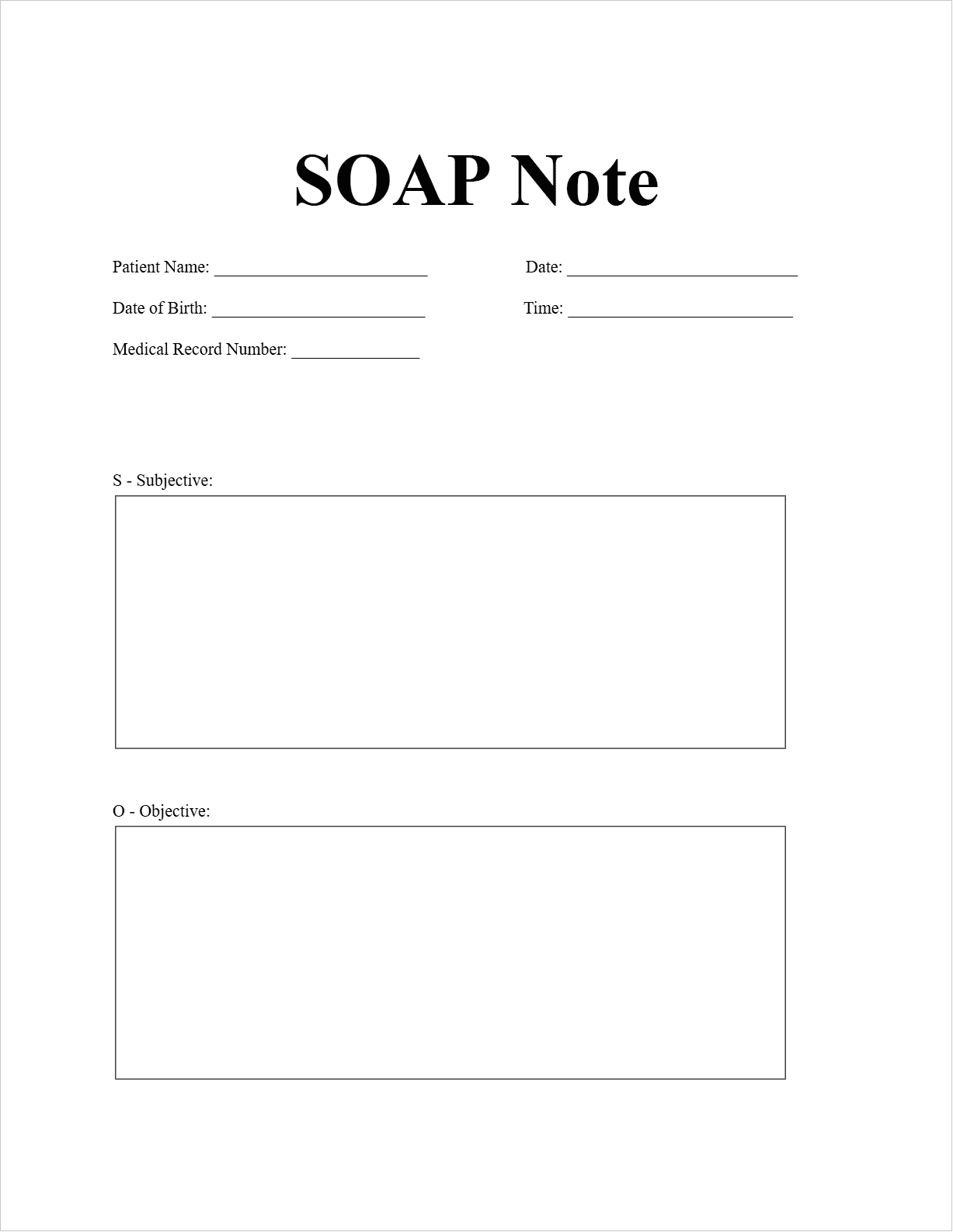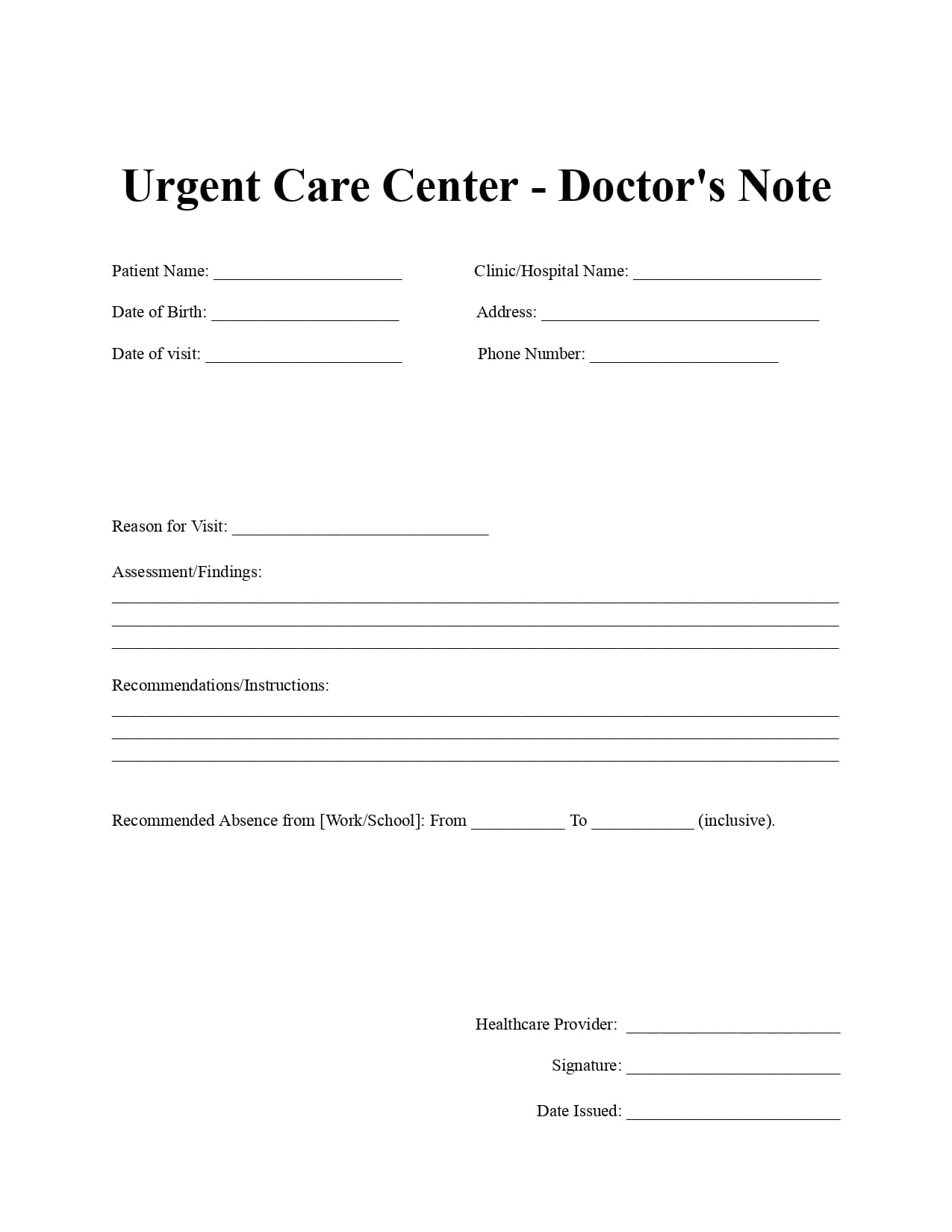When a patient's medical condition requires the expertise of a specialist, a clear and concise medical referral letter becomes an essential tool. This document facilitates communication between healthcare providers, ensuring the specialist has all the necessary background information to provide the best possible care. Whether you're a primary care physician referring a patient or a specialist receiving one, understanding the components of a well-crafted medical referral letter is crucial. This article will guide you through the purpose and types of medical referral letters, provide a practical example, and answer frequently asked questions.
What is a Medical Referral Letter or Referral Note?
A medical referral letter, also often referred to as a referral note, is a formal communication from one healthcare provider (usually a primary care physician or general practitioner) to another (typically a specialist). Its primary purpose is to recommend that a patient be evaluated or treated by a specialist who has expertise in a particular area of medicine. The letter provides the specialist with relevant information about the patient's medical history, current condition, the reason for the referral, and any specific questions or requests from the referring physician. This ensures that the specialist has a comprehensive understanding of the patient's needs before the consultation.
Types of Medical Referral Letters
While the core purpose remains the same, medical referral letters can vary slightly depending on the situation and the specific requirements. Some common types include:
- Routine Referral: This is the most common type, used when a primary care physician believes a patient would benefit from the expertise of a specialist for a particular medical issue.
- Urgent Referral: In cases where a patient's condition requires more immediate attention from a specialist, an urgent referral letter might be sent, highlighting the need for a prompt evaluation.
- Insurance-Mandated Referral: Many insurance plans require a referral from a primary care physician before a patient can see a specialist. This letter serves as documentation for the insurance company as well as the specialist.
- Second Opinion Referral: Sometimes, a patient or physician may seek a second opinion from a different specialist. The referral letter in this case would outline the current diagnosis and treatment plan and the specific questions for the second opinion provider.
Medical Referral Letter Example
Imagine Dr. Susan Lee, a family medicine physician, is referring her patient, Robert Garcia, to a cardiologist, Dr. Michael Brown, for further evaluation of chest pain. Here's how her medical referral letter might look:
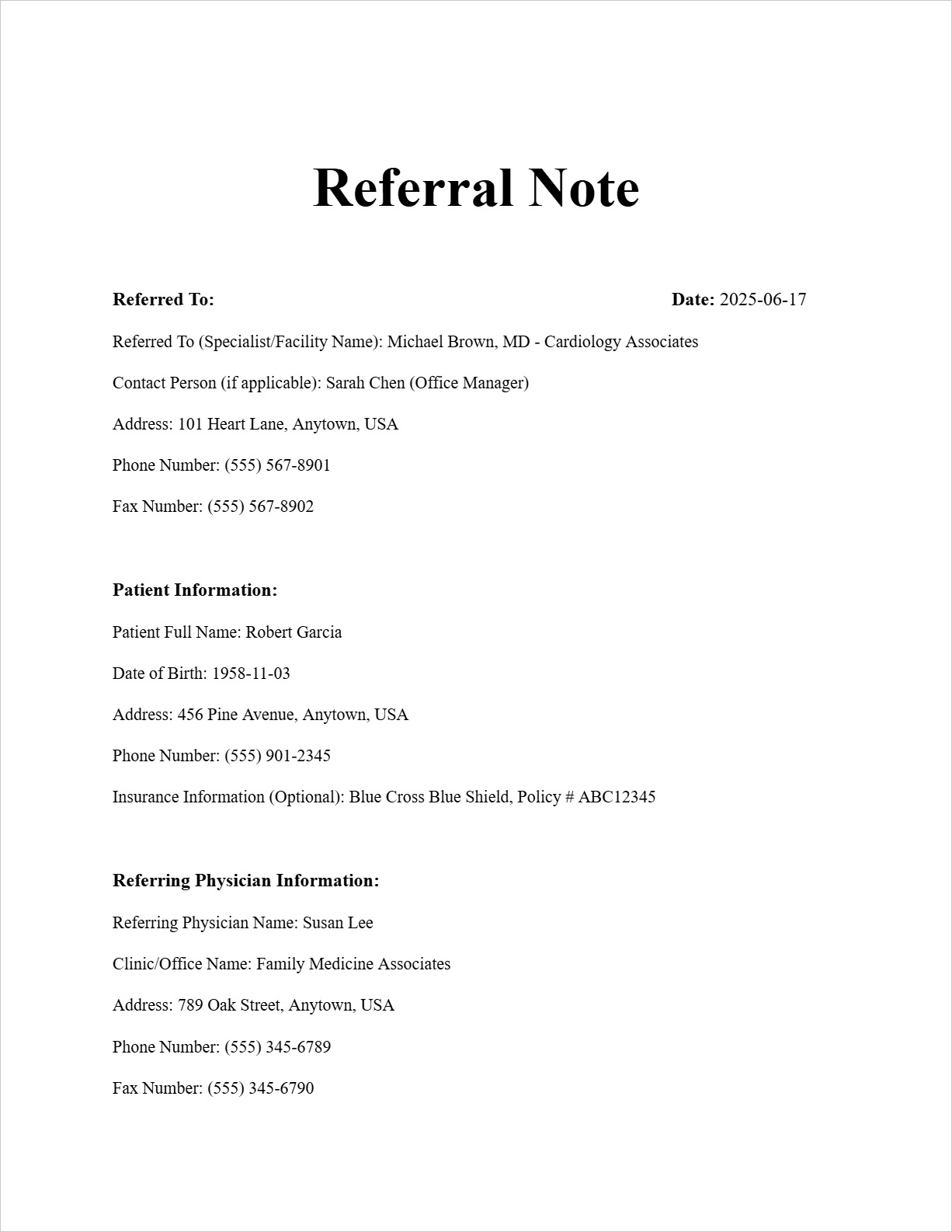
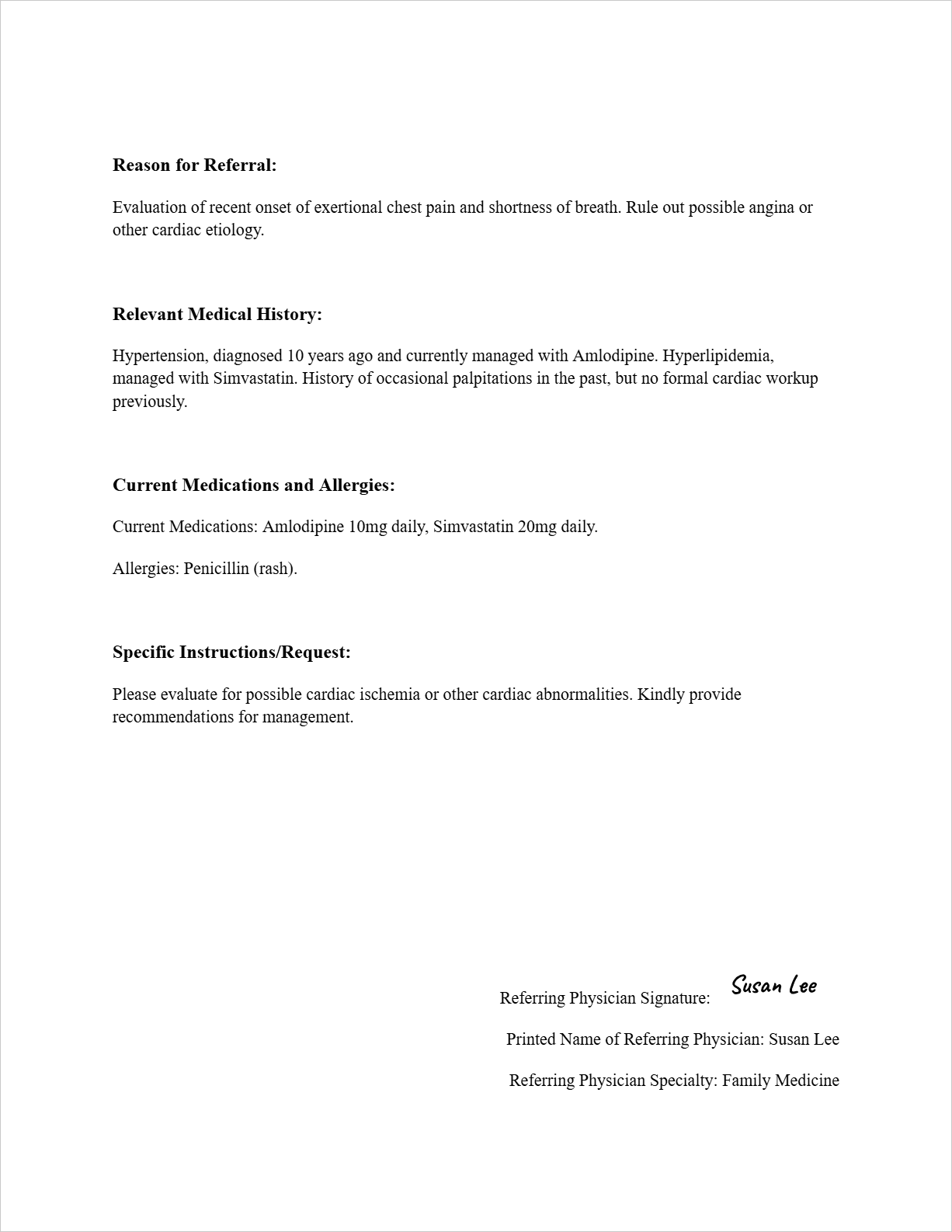
Referral Note
Referred To:
Referred To (Specialist/Facility Name): Michael Brown, MD - Cardiology Associates
Contact Person (if applicable): Sarah Chen (Office Manager)
Address: 101 Heart Lane, Anytown, USA
Phone Number: (555) 567-8901
Fax Number: (555) 567-8902
Date: 2025-06-17
Patient Information:
Patient Full Name: Robert Garcia
Date of Birth: 1958-11-03
Address: 456 Pine Avenue, Anytown, USA
Phone Number: (555) 901-2345
Insurance Information (Optional): Blue Cross Blue Shield, Policy # ABC12345
Referring Physician Information:
Referring Physician Name: Susan Lee
Clinic/Office Name: Family Medicine Associates
Address: 789 Oak Street, Anytown, USA
Phone Number: (555) 345-6789
Fax Number: (555) 345-6790
Reason for Referral: Evaluation of recent onset of exertional chest pain and shortness of breath. Rule out possible angina or other cardiac etiology.
Relevant Medical History: Hypertension, diagnosed 10 years ago and currently managed with Amlodipine. Hyperlipidemia, managed with Simvastatin. History of occasional palpitations in the past, but no formal cardiac workup previously.
Current Medications and Allergies:
Current Medications: Amlodipine 10mg daily, Simvastatin 20mg daily.
Allergies: Penicillin (rash).
Specific Instructions/Request: Please evaluate for possible cardiac ischemia or other cardiac abnormalities. Kindly provide recommendations for management.
Referring Physician Signature: (Imagine a signature is drawn here)
Printed Name of Referring Physician: Susan Lee
Referring Physician Specialty: Family Medicine
FAQs about the Medical Referral Letter Template
What information is essential to include in a medical referral letter?
Key components include the referring physician's contact information, the date, patient identification details, the specialist's contact information, the reason for the referral, relevant medical history, current medications and allergies, and any specific instructions or requests.
Is there a standard format for a medical referral letter?
While there isn't one universally mandated format, most referral letters follow a similar structure, including the elements mentioned above. Using a template can help ensure all necessary information is included.
How is a medical referral letter typically sent?
Referral letters can be sent via fax, email (if secure and compliant with privacy regulations), or through electronic health record systems that allow for direct communication between providers.
What should a patient do after receiving a referral letter?
The patient should contact the specialist's office to schedule an appointment. It's helpful for the patient to bring a copy of their referral letter, along with their insurance information and any relevant medical records.
Why is a clear and detailed medical referral letter important?
A well-written referral letter ensures the specialist has a comprehensive understanding of the patient's condition and the reason for the referral, leading to more efficient and effective care. It also facilitates better communication and collaboration between the referring and consulting physicians.
Free Download: Printable Medical Referral Letter Template
You can download the Medical Referral Letter Template mentioned above by clicking Use Template button on this page. Customize it to fit your specific needs and preferences.


